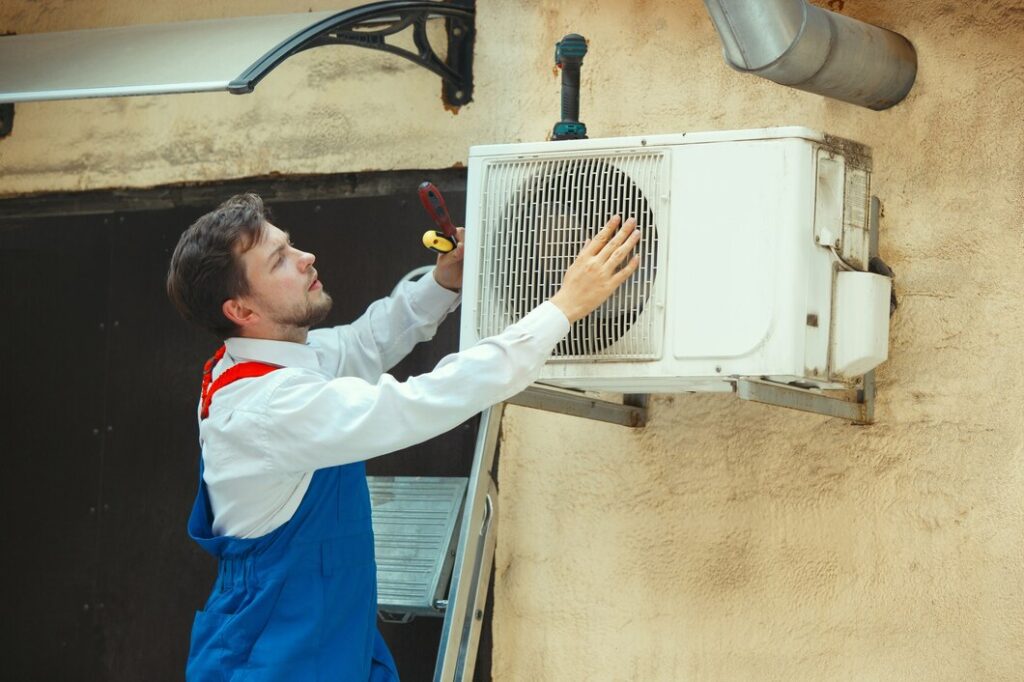
Introduction
Heating, Ventilation, and Air Conditioning (HVAC) systems are essential for maintaining comfortable indoor environments in homes and commercial spaces. With the complexities of modern HVAC technology, understanding the nuances of repair, installation, and maintenance can help homeowners and business owners save money and enhance the lifespan of their systems. This article delves into the critical aspects of HVAC systems, providing insights into their repair, installation, and maintenance.
1. Understanding HVAC Systems
1.1 What is HVAC?
HVAC stands for Heating, Ventilation, and Air Conditioning. It refers to the technology and systems used to regulate the indoor climate of buildings. HVAC systems ensure comfort by controlling temperature, humidity, and air quality.
1.2 Components of HVAC Systems
- Heating Units: This includes furnaces, boilers, and heat pumps, which generate heat for the building.
- Cooling Units: Air conditioners and chillers that remove heat from the indoor environment.
- Ventilation Systems: Fans, ducts, and filters that circulate and purify the air within a space.
- Thermostats: Devices that regulate the temperature by communicating with heating and cooling units.
2. HVAC Installation
2.1 Importance of Professional Installation
Proper installation is crucial for optimal HVAC performance. Incorrect installation can lead to energy inefficiencies, higher utility bills, and a shortened lifespan for the system.
2.2 Steps in the Installation Process
- Assessment: Evaluating the space to determine the appropriate size and type of HVAC system needed.
- Selecting the Right System: Choosing between options like central air conditioning, ductless mini-splits, or geothermal systems based on the assessment.
- Ductwork Installation: If applicable, designing and installing ductwork to ensure efficient airflow.
- Electrical Connections: Setting up the necessary electrical systems to power the HVAC units.
- Final Setup: Configuring the thermostat and ensuring all components work together seamlessly.
2.3 Common Installation Mistakes
- Under-sizing or over-sizing the unit.
- Poor ductwork design leading to airflow issues.
- Inadequate sealing and insulation, causing energy loss.
- Neglecting local building codes and regulations.
3. HVAC Repair
3.1 Signs Your HVAC System Needs Repair
- Unusual Noises: Grinding, squeaking, or banging noises can indicate mechanical issues.
- Inconsistent Temperatures: Rooms that are not heating or cooling evenly.
- Increased Energy Bills: A sudden spike in energy costs can signify an inefficient system.
- Poor Air Quality: Increased dust, humidity, or unpleasant odors can indicate problems.
3.2 Common HVAC Issues
- Refrigerant Leaks: Loss of refrigerant can impact cooling efficiency.
- Dirty Filters: Clogged filters can restrict airflow and lead to system strain.
- Thermostat Malfunctions: Faulty thermostats can lead to incorrect temperature readings and inefficient operation.
- Electrical Failures: Issues with wiring or components can lead to system shutdowns.
3.3 The Repair Process
- Diagnosis: A qualified technician evaluates the system to identify the root cause of the problem.
- Repair or Replace: Based on the diagnosis, necessary repairs are made, or components are replaced.
- Testing: After repairs, the system is tested to ensure it operates correctly.
4. HVAC Maintenance
4.1 Importance of Regular Maintenance
Regular maintenance is crucial for extending the lifespan of HVAC systems, improving efficiency, and preventing costly repairs.
4.2 Maintenance Tasks
- Filter Replacement: Changing air filters every 1-3 months to maintain airflow and indoor air quality.
- Cleaning Coils: Removing dirt and debris from evaporator and condenser coils to enhance heat exchange.
- Inspecting Ductwork: Checking for leaks or blockages in the duct system that could impede airflow.
- Checking Refrigerant Levels: Ensuring refrigerant levels are adequate for optimal cooling.
- Lubrication of Moving Parts: Reducing friction in components to prevent wear and tear.
4.3 Creating a Maintenance Schedule
Establishing a regular maintenance schedule—typically twice a year (once before heating season and once before cooling season)—can ensure your HVAC system operates at peak efficiency.
5. Energy Efficiency and HVAC Systems
5.1 Understanding SEER and AFUE Ratings
- SEER (Seasonal Energy Efficiency Ratio): Measures cooling efficiency. A higher SEER rating indicates better energy efficiency.
- AFUE (Annual Fuel Utilization Efficiency): Measures heating efficiency. A higher AFUE percentage indicates more efficient fuel use.
5.2 Benefits of Energy-Efficient Systems
Investing in energy-efficient HVAC systems can lead to lower utility bills, reduced environmental impact, and enhanced comfort.
6. Conclusion
Understanding HVAC repair, installation, and maintenance is essential for homeowners and business owners alike. Regular maintenance, professional installation, and timely repairs can enhance comfort, improve energy efficiency, and extend the lifespan of HVAC systems. By taking proactive steps, you can ensure that your HVAC system operates smoothly year-round.